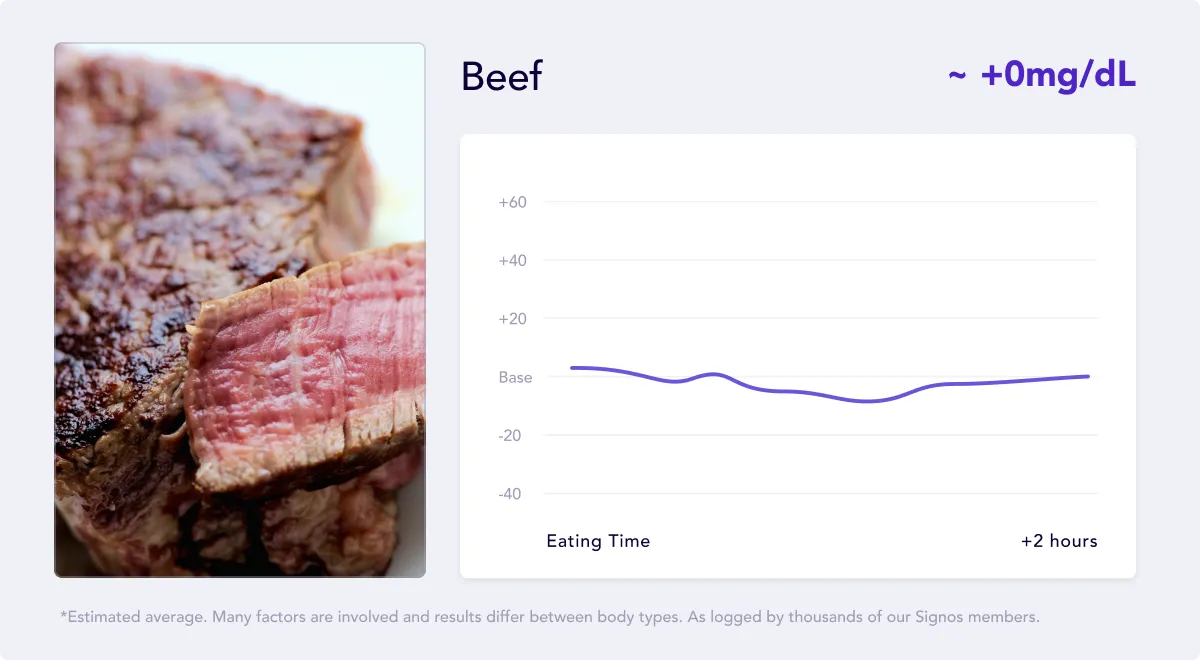Pork and beef are staples for many American dinner tables, but deciding which is better isn’t always easy. Most of the time, whether one food is better depends on your body, health background, and even genetics. That said, some differences between these two types of meat may make you want to choose one over the other.
Pork and beef are two types of red meat, although pork is often called “the other white meat” because of its lighter color. Red meat is a good source of protein and contains iron, zinc, and other essential nutrients our bodies need. However, red meat tends to have a higher fat content and is linked to an increased risk of heart disease and other health concerns.1
This article will examine the primary differences between pork and beef, including nutrition, taste, and alternatives, and help you decide which is better for your health.

Pork vs Beef Cuts
A cut of meat is named based on the location in the body of the animal it is taken from. Standing at the butcher counter, you’ll see multiple options for each. The cut determines the fat content, texture, flavor, and how tender the meat is, with options like:
- Pork: Loin, Shoulder, Leg, Ribs, Belly.
- Beef: Sirloin, Tenderloin, T-Bone Steak, Ribeye Steak, Brisket.
Generally, pork is leaner than beef, although this can vary depending on the specific type of meat and how it is prepared.
For example, leaner cuts of beef, such as sirloin, can contain less fat than some pork cuts. On the other hand, bacon, made from pork belly, can be high in fat compared to lean beef.
Pork vs Beef Environment Impact
All livestock has some environmental impact, although farming methods can be more sustainable than others. Animal products are a significant contributor to greenhouse gas emissions, and livestock like cattle require a lot of land for production.2
Some studies suggest pork has a lower carbon footprint than beef because pigs don’t emit methane gas like cows, but they still contribute to greenhouse gas emissions.3 Factors such as transportation, processing, and packaging also contribute to the overall environmental impact of meat production. Pork and beef can be produced sustainably with proper farming practices, so pasture-raised or grass-fed beef options from farms that emphasize renewable energy can be a way to reduce environmental impact.
Pork vs Beef Cost
Based on overall production costs, pork tends to be less expensive than beef. However, prices can vary greatly depending on the quality of the meat and where it was raised. For example, organic or specialty cuts of pork may be more expensive than conventionally raised beef.
Specific cuts of both types of meat will be more expensive. Prime rib or filet mignon will likely cost more than a pork tenderloin. But when comparing similar cuts, pork is a cheaper option.
Pork vs Beef Substitutes
If you want to add more plants to your diet for health benefits, consider swapping pork or beef for plant-based protein alternatives. Plant proteins can include tofu, tempeh, beans, or lentils.
Keep expectations for flavor and texture in check when trying these substitutes, as they may not taste exactly like pork or beef, but they still can be delicious. Swapping a steak for a portabella isn't the same, but you can still get a great flavor with sauce, marinades, and other ingredients.
Is Pork Better Than Beef?
As you'll learn below, there isn't a significant difference between the nutritional values of pork and beef. Both serve as an excellent source of protein and essential nutrients, but as mentioned above, there are downsides to eating too much red meat, so moderation for each is still essential. Pork tends to have slightly less saturated fat, making it a potentially better option for those keeping tabs on intake.4
Studies on red meat and health don't typically differentiate between pork and beef, so it's challenging to say which is "better" for you. One study compared the effect of pork, beef, or chicken on body composition and found no difference between the three proteins.
Choosing lean cuts of either meat and balancing your diet with other protein sources can help maintain a nutritious and balanced diet.
Pork vs Beef: Nutrition
To compare pork vs. beef, the cuts should be similar enough to have a fair comparison. A fatty cut of beef will be significantly different from a lean cut of pork. To maintain consistency, we will use USDA data to compare roasted pork loin (pork chops) to a roasted ribeye steak, trimmed of excess fat.6, 4
As noted in the chart, pork and beef share many similarities, but there are significant differences:
- Both pork and beef are nearly identical in grams of protein and cholesterol.
- Beef is slightly higher in calories than pork.
- Pork contains less total fat and less saturated fat.
- Pork and beef are both sources of phosphorus and selenium.
- Beef is higher in iron, zinc, and vitamin B12.
Glycemic Index
The glycemic index tells you how quickly your body turns the carbohydrates from your food into glucose.7 Glucose is our bodies' primary energy source, and insulin helps regulate blood sugar levels.
Meat doesn't have a glycemic index because it's carb-free. But, if you add a sugary BBQ sauce or serve your pork with sweetened applesauce, the glycemic index of your meal will increase.


Minerals
Both types of meat contain minerals, but based on the above comparison, beef contains more iron, an essential nutrient for carrying oxygen throughout the body. Beef also contains high amounts of zinc, necessary for immune system function and wound healing.8
On the other hand, Pork has slightly higher levels of selenium, a mineral that plays a role in metabolism and thyroid function (although the difference is minimal).9
Vitamins
There are slight differences between pork and beef in vitamin content. Beef contains more vitamin B12, which is crucial for red blood cell production and brain function.10 Pork is slightly higher in thiamine, which helps the body convert food into energy.11
While pork and beef contain small amounts of some other vitamins, neither have enough to significantly contribute to total intake.
Learn More About Nutrition and Healthy Foods With Signos
Nutrition information can feel overwhelming, but it doesn’t have to be. The more you learn about food and how it impacts your body, the easier it is to make healthy choices every day.
You can read more articles about nutrition and healthy habits on the Signos’ blog or find out if Signos is a good fit for you by taking a quick quiz here.
Sign up to be the first to know about special offers and exciting Signos news.




.svg)
.svg)
.svg)
.svg)
.svg)
.svg)
.svg)
.svg)
